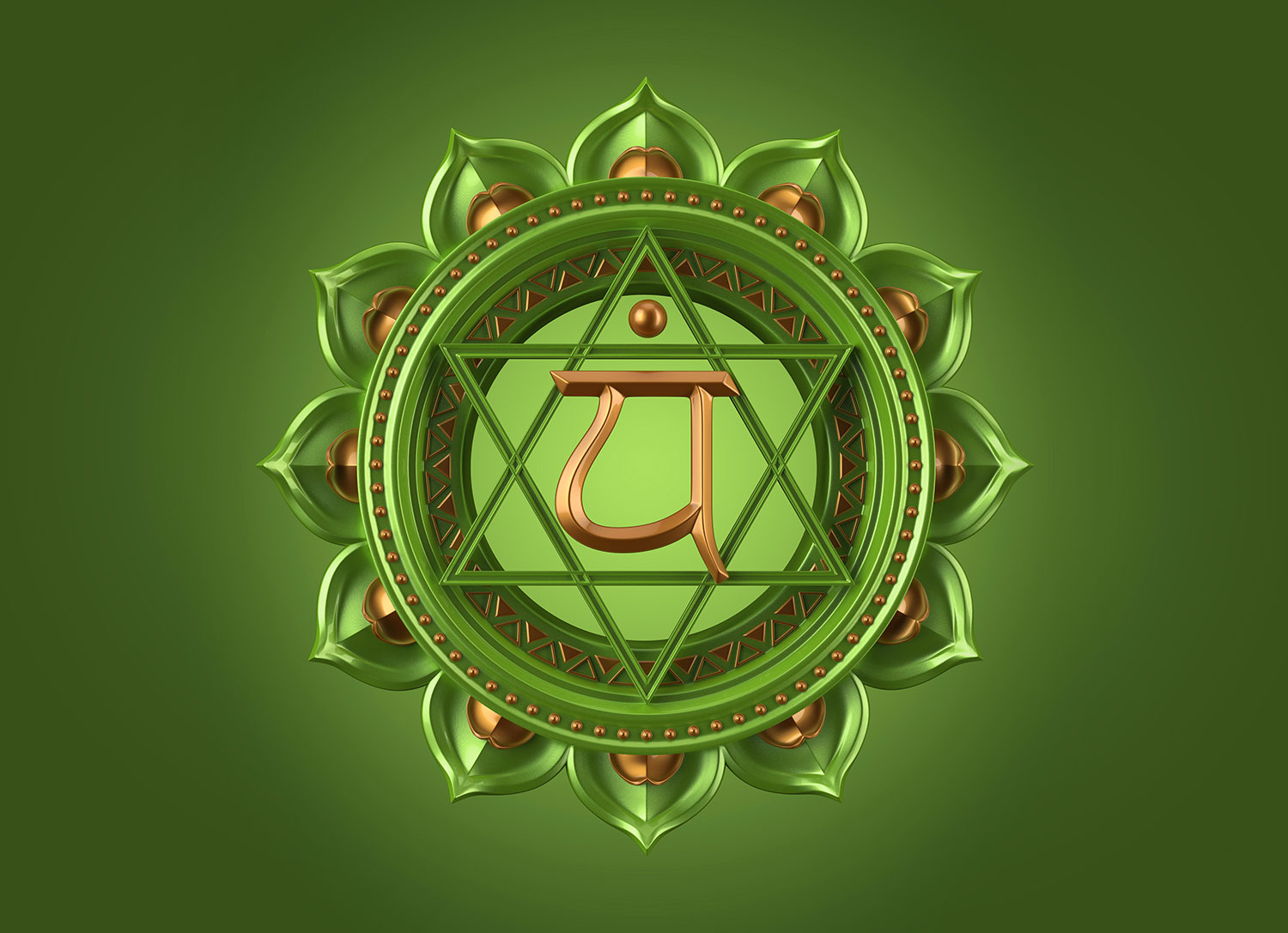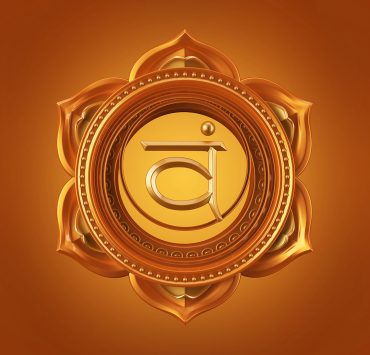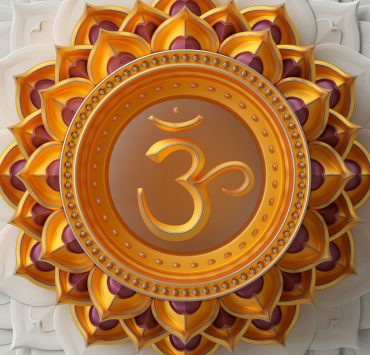
A graduate of Arizona State University, Nicole Baker is a…
Chakras are energy centers that are frequently referred to by yoga teachers building their classes around one or multiple chakras. Pronounced chuhk-ruhs, there are seven main chakras that are responsible for our health and well-being. Anodea Judith, author of many chakra centric books such as Eastern Body, Western Mind, describes them as a “seven-leveled philosophical model of the universe”. They are considered to be the system within us that receives and returns the life force energy. Theses wheels of energy require tending to, physically, emotionally, and spiritually. The care we give them or not give them influences our physical body, thoughts, behaviors, stress levels, and disease.
The seven main chakras create the color of the rainbow. You can imagine the chakras starting from the tailbone and moving up along the spine towards the crown of the head. Starting at the root chakra and moving upwards, we all have the following chakras:
— Root Chakra (Muladhara): A red four-petaled lotus and located at the base of our spine and responsible for survival. It encompasses our needs for food, sleep, sex, and self-preservation.
— Sacral Chakra (Svadhisthana): An orange six-petaled lotus that is set at the pelvis. It inspires our creativity, emotions, unconscious, and sexual energy.
— Solar Plexus Chakra (Manipura): This ten petaled yellow lotus is located at the solar plexus is associated with our power and life experiences.
— Heart Chakra (Anahata): At 12 petals, this chakra is green and located at the heart center. It is responsible for love and openness.
— Throat Chakra (Vishuddha): With sixteen petals, the throat chakra is responsible for truth and self-expression.
— Third-Eye Chara (Ajna): Located between the eye-brows, this chakra only has two main petals and is seen as purple. This chakra guides our intuition, imagination, and self-knowing.
— The Crown Chakra (Sahasrara): The crown chakra is depicted with a thousand-petaled. It is seen as purple or white and seen as a gateway to consciousness. It connects us to divine energy and enlightenment.
When tending to the chakras, it is important to keep them all equally balanced. As energy is both going up and down the chakras, when one is depleted or in excess it directly affects the chakras above and below it. For example, if the root chakra, responsible for our survival, is depleted by lack of stability and finances, it would make it hard to get our creative juices flowing from the sacral chakra. Since we wouldn’t have a solid foundation or grounding, it would make it very difficult for any of the other chakras to remain in balance.
The heart chakra is one of the most talked-about chakras. Responsible for the ability to not only love others but love ourselves, it can help us with our ability for self-care and to have fruitful relationships.
Heart Chakra Overview

Each chakra is associated with an element (with the exception of the crown chakra). The heart chakra is associated with air and its purpose is to guide love and balance. Located in the chest, this green energy center is depicted as a 6 pointed star surrounded by 12 petals. The six-pointed star is actually made up of two triangles, one pointing down and the other pointing up. It represents both the downward flow of spirit into matter and the upward flow, meeting together, and in balance at the heart. Harish Johari, author of Chakras Energy Centers of Transformation, notes that is responsible for aiding the functions of the lungs and the heart, fueling our bodies with oxygen and prana.
According to Anodea Judith, issues that are associated with this chakra include self-love, balance, relationships, intimacy, devotion, and the ability to give and receive. It starts to develop in children between four and seven years old when social identity begins to start. Anahata (Sanskrit for the heart chakra) helps us tap into unconditional love. When in balance, we can love, form relationships, and transform the self-centered ego of the chakras below it into the larger realm in the universe. Love helps us bring down our defenses, move away from being self-centered, and help others. In addition to giving love, it also helps us receive love.
Issues
Deficiencies and Excess

When the chakras are out of balance, they can be considered to have either excess energy or a deficit in energy. Either option creates an imbalance, not only affecting the heart chakra but moving up towards the chakra above– the throat chakra and the chakra below– the solar plexus. Those imbalances further affect the chakras above and below those, creating shortcomings or excess along the entire system.
When the fourth chakra is deficient, it is depicted in our behavior in a variety of ways. We tend to feel unaccepted, wanting care and attention but refusing to admit it, associates approval with love, and afraid of commitment. It shows up as someone withdrawing from social interactions and relationships or waiting for someone to be “perfect” towards them before showing any care. There is no openness to give. It is a withdrawal from love and its possibilities.
It can seem odd to have an excess of the heart chakra– who doesn’t want more love? However, it is not actual love, it is excessive use of attachments for personal needs or deficiencies. When in excess, we need constant assurance or an attachment to others that don’t allow them to maintain their own freedom. This can often be seen in co-dependent people who rely on their relationship with other people as a need for their own happiness.
Physical Malfunctions
When the heart chakra is not in balance a variety of health issues can arise. People may feel tension near their shoulder blades or chest pain. Their immune system may be suppressed. Respiratory problems can arise such as asthma or shortness of breath. The disease will show up in the heart, lungs, breasts, and arms. Physically, it may show up with a sunken chest or slouched shoulders.
Healing Practices
When the chakras are out of balance, self-care and lifestyle changes can help bring the system back to normal. There are a variety of healing practices including talking to medical professionals, therapists, and Ayurvedic doctors. There are some practices you can do on your own. However, when in doubt talk to your health care provider especially in severe situations or health concerns.
Asana

Our thoughts, emotions, and body are interconnected. When the heart chakra is out of balance, the energy can get stuck in our body, and movement can help shift or move the energy. Here is a heart-opening practice that can help shift energy as a result of an imbalanced Anahata.
— Start in easy seated position. Turn your energy inward and focus on the heart. It could be helpful to place your hands on the heart or even chant the seed sound, yang.
— Set your intention for your practice, suggested heart-related mantras could be:
— I offer and receive love with ease.
— I am cultivating compassion for myself and others.
— I am worthy of love.
— Take the arms out to the side in a T-Shape, as you inhale stretch the arms back while pressing the chest and tilting the pelvis forward. As you exhale tilt the pelvis back, round in the upper back, bring the chin towards the chest while giving yourself a hug. Alternate between the two postures, possibly silently repeating your intention on both the inhale and exhale. Practice for 10 – 20 breaths.
— Cobra pose. Lower onto your belly, place the hands underneath the shoulders onto your mat, and lift your heads, shoulders, and chin off the mat while gazing forward. Release any tension that might be held in the face or the shoulders. Let the heart shine forward actively pressing the upper back towards the heart as the chest opens. Hold here for 5-10 breaths and repeat 3 times.
— Child’s Pose. Press back into a wide legs child’s pose with the knees out wide and the big toes touching. Creating a connection with the body and earth beneath you. Hold here for about 15 breaths.
— Camel’s Pose. Move into a kneeling position with the shoulders stacked above the hips, press the legs forward as you reach back towards the heels. Let the shoulder blades come together as the heart lifts towards the sky. If the neck allows, let the head release back. Hold for 5 breaths. After coming out of the posture return to child’s pose for 5 breaths.
— Bridge. Lie on your back on your mat. Bend the knees and press the soles of the feet into the mat hip-distance apart. While keeping the nose pointed towards the sky, lift the hips up, bring the shoulder blades together as the heart opens towards the sky. The arms can either stay pressed into the mat along the side of the body or interlace the fingers underneath the back. Hold for 5 to 10 breaths. After rolling out of the posture, take 5 breaths to allow the body to ground back down to the earth before hugging your knees into the chest.
— Savasana. Lie down in a posture that is comfortable and supportive. Allow time for the experience to integrate. Bring to mind the intention of practice any time your mind begins to wander.
Reaching Out and Taking In

Anodea Judith details in her book, Eastern Body, Western Mind, a simple breathing exercise that can help people practice the combination and balance of both reaching out and taking in. In her book, she describes it with partner work but you can also do it on your own.
— Lying down on the floor or yoga mat, place the feet firmly on the floor with the knees bent. Notice the breath flowing in and out of the body.
— After you’re comfortable, reach the arms forward on the exhales and bring the hand towards the heart on the inhales. This should be a slow and gentle movement. With the in-breath imagine what you are reaching out for in terms of love– it could be self-love, the ability to love others, or any area you feel needs extra support. On the out-breath, imagine anything that you need to either let go of or aspects of yourself you would like to offer to those around you. Practice as long as you feel comfortable.
Letter to Self

In her book, Journaling the Chakras: Eight Weeks to Self-Discovery, Amber Lea Starfire uses the activity to help heal the chakra by writing a letter to self. Letters to the self can be a powerful way to let go of our judgments and critiques of ourselves and help practice self-compassion.
— Start with a pen and paper and find a quiet space free of distractions.
— Instead of yourself, imagine you are someone who cares about you. They can be someone alive or someone who has passed on. You may still know them or they may be someone you no longer keep in touch with but was a supportive relationship.
— As that person, write down all of the things they would say about you that are reasons why they would love you. They could even include your quirks that they find sweet.
— After writing the letter, read the letter back to yourself in a mirror. Take note of how you feel or what thoughts come up.
By finding balance and harmony in the heart chakra, not only do we help our own health and well-being for issues associated with the chakra but it also helps us find balance in other areas of our lives. While it may be impossible to always stay in balance, by tuning in and noticing when Anahata is excessive or deficient, we can practice healing modalities to help bring a sense of harmony into our lives.
What's Your Reaction?
A graduate of Arizona State University, Nicole Baker is a force to be reckoned with in the realm of health and wellness. She studied behavioral health, which propelled her desire to live holistically and share her knowledge with other like-minded individuals.














